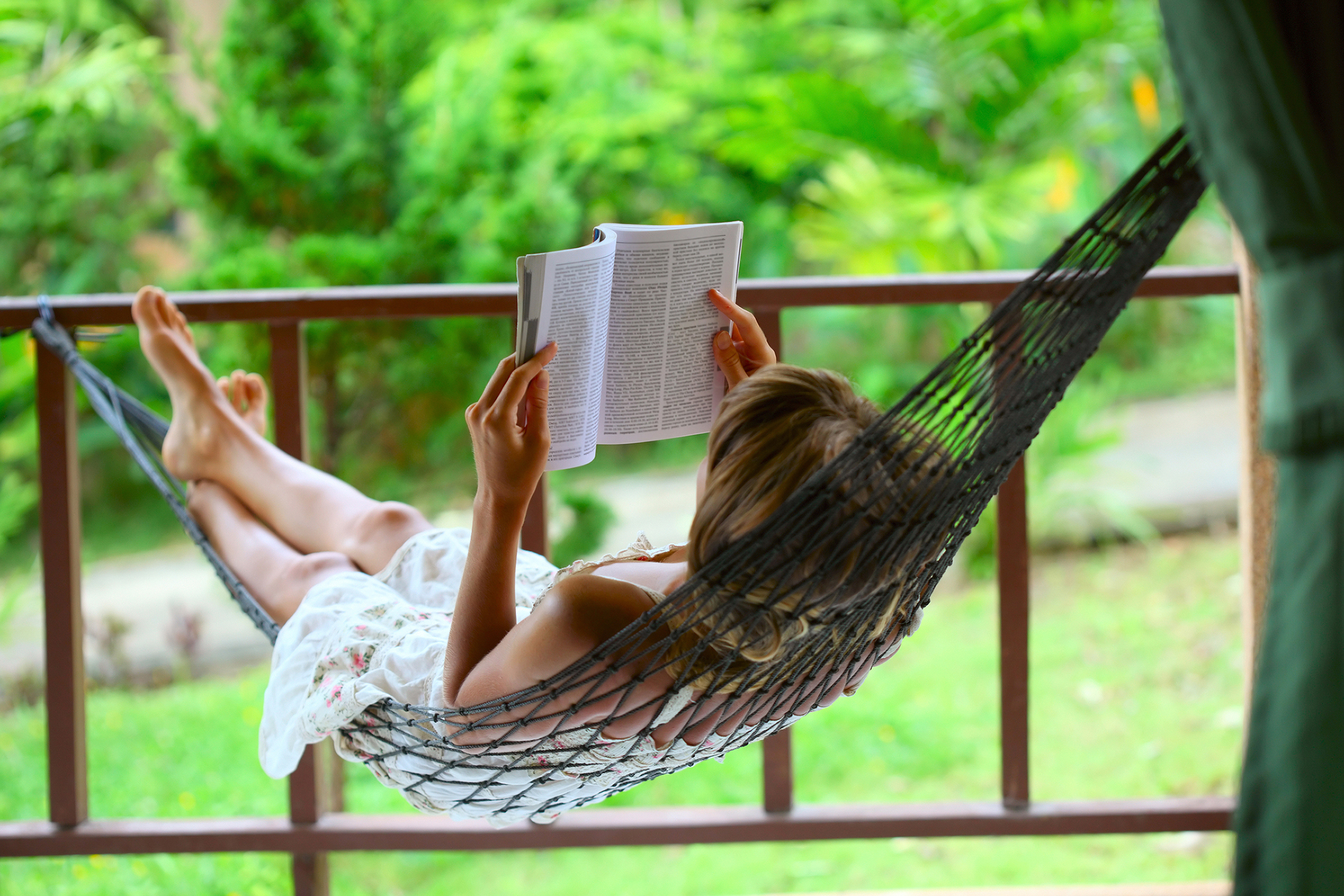Harvard Psychologist’s “One Less Straw” Tip Is Life-Changing — Do It Now To Relax Without Worry This Summer
Stressed out because you feel like you always need to be productive? Read this for permission to be lazy

You finally score a day to yourself without any real obligations and you want to just take it easy and put your feet up and, well, relax. But your mind keeps whirring with worries and running through your to-do list. Next thing you know, you’re up on your feet tidying up.
I can’t relax…why is it so hard to slow down and do something for myself? you wonder, feeling frustrated. And to your dismay, it’s a feeling that even pops up when you’re on vacation or during holidays.
Trust us, you’re not alone. Here, we asked top experts help identify why it’s so hard for women to really relax (hint: women are often conditioned to feel guilty if we’re not “productive”), how to build relaxation into everyday activities and ways to finally quiet the din so you can enjoy the downtime you deserve.
Shake off received “scripts”
When you take a breather, pay extra attention to your narrative, urges expert Beth Kurland, Ph.D., author of Dancing on the Tightrope: Transcending the Habits of Your Mind & Awakening to Your Fullest Life. “Your mind may say you have too much to do to rest, or that if you’re not doing enough, or even that you are not enough.”
If this is the case, she suggests reminding yourself that the messages we learned from society that women always need to be “doing” to be accepted are not true. “Just being aware of these scripts helps you loosen their grip.”
Write yourself a prescription for relaxation
“Women often tell me relaxing is too ‘luxurious’ or they don’t have time,” says expert Marlynn Wei, M.D. aa Harvard- and Yale-trained psychiatrist, therapist and certified yoga teacher who specializes in treating anxiety and depression. “But if you reframe it as a necessity with concrete benefits like helping you avoid burnout, you’ll find it so much easier.”
Can you listen to birds for 2 minutes or put your hand on your heart for 1 minute? “Even small moments de-stress the nervous system fast,” Dr. Wei insists.
Remove a single ‘straw’ from the pile
“I hear from patients every day that they’re on edge,” says expert Susan Pollak, MTS, Ed.D., author of author of Self-Compassion for Parents, and a clinical psychologist and senior teacher at the Center for Mindfulness and Compassion at Harvard. And that goes double, or even triple, for women in the “sandwich generation.”
“Between caring for my mom, worrying about my grown child who’s floundering and having a new grandchild, my stress is soaring—but the good news is ‘the straw that breaks the camel’s back’ also works in reverse.” In other words, if you remove one “straw,” you’ll feel a huge lift. “Maybe you can skip making dinner one night a week. Tiny steps like this can make a big difference.”
Do unto others to do unto yourself
It may seem counterintuitive, but being kind to others is one of the best ways to curb racing thoughts when you’re trying to relax, says Pollak. “Whether you offer someone a compliment or buy a friend coffee, generosity reduces your stress levels—and when you’re kind to others, it’s easier to be kind to yourself.” Start your day with the intention to look for ways to be kind to others, and you’ll find so many, and feel more joy along the way.
Try ‘relaxation stacking’
You may have heard of “habit stacking,” tethering a new activity to an established one to help form new routines. If you want to drink more water, for instance, you might place a glass next to your toothbrush as a visual cue. The same idea, “relaxation stacking,” helps hardwire serenity-enhancing habits.
“If you take walks, consider ‘stacking’ deep breathing onto them,” suggests Dr. Wei. “As you take four steps, take four breaths, then exhale longer to trigger the soothing relaxation response.” This helps you easily cement calm-inducing strategies into your daily life.
Embrace experimentation
The strategies that work best for you are unique to you, says Kurland. “Relaxation doesn’t have to be stillness—it can be connecting with others or doing something creative.” Decide which “flavor” of R&R is best for you. “You might ask yourself what you loved doing as a child to help you reconnect with your playful spirit, like reading or playing a game.” True relaxation is about listening to your mind, body and heart.

Scroll through cherished memories
Because we live in a go-go-go culture, the hyped-up feeling spurred by a steady flow of adrenaline can become our new “normal,” reveals psychiatrist Ludmila De Faria, MD. A simple trick to outsmart “adrenaline tolerance” is to call to mind positive memories. “Pulling out this mental photo album causes your brain to release joy-boosting serotonin and dopamine,” she says. “Replacing the undertow of adrenaline with soothing hormones makes it easier for you to unwind.”
Still can’t relax? Try some of our favorite mindfulness practices
Investigate what’s holding you back this way
To turn off your worries and relax in any given moment, try out “RAIN”: recognize, allow, investigate, nurture, advises mindfulness expert Tara Brach, PhD. By first recognizing that you’re anxious, and allowing for it, you give yourself the power to change, she encourages. Then investigate by asking yourself why you’re stressed.
Your answer will give you clarity so you can either resolve it or let it go for now. Then, put your hand on your heart and send a nurturing message: Thank you, anxiety, for trying to protect me, but I’m good now. Says Brach, “This combination of mindfulness and self-compassion eases the emotions preventing us from relaxing.”
Breathe in joy
One of the best ways to invite joy is simply to breathe. “The art of pausing is a sacred act,” says Brach. Stopping to focus on our breath brings us into presence with our spirit. Simply close your eyes and feel your inhale coming into your chest and belly, then exhale slowly, intentionally letting go. “You may feel anxious at first, but stay with it. Over time, your breath will connect to your innate presence, helping you discover a greater capacity to feel wonder and to truly relax.”
Savor the moment
When we’re fully in the “now,” worries about the past and future disappear, explains Gillihan. To bring yourself into the present, just take in your surroundings. Note the couch, the clock, the tree outside. Listen to the wind chimes on your porch. Feel your body sink into your chair. “When we invite our mind to be as present as our body,” Gillihan says, “we have a sense of coming home to a place of joy that lets us relax.”
A version of this article originally appeared in our print magazine, Woman’s World.












